Alfred J. Kwak Filmstripboeken: Difference between revisions
No edit summary |
|||
| (37 intermediate revisions by the same user not shown) | |||
| Line 8: | Line 8: | ||
|data12 = [[Herman van Veen]] | |data12 = [[Herman van Veen]] | ||
|label13 = Artwork by | |label13 = Artwork by | ||
|data13 = [[Harald Siepermann]]<br>[[Hans Bacher]] | |data13 = [[Harald Siepermann]]<br>[[Hans Bacher]] | ||
|label15 = Typesetting and layout | |label15 = Typesetting and layout | ||
|data15 = Ton de Jong jr. | |data15 = Ton de Jong jr. | ||
| Line 24: | Line 24: | ||
}} | }} | ||
The Filmstripboek series was made in 2006 along with the Dutch [[Disky DVDs]]. The intention was to use screengrabs from all 52 of the episodes and make them into 17 comicbooks (3 episodes each). Only 2 of these were eventually released. | The Filmstripboek series was made in 2006 along with the Dutch [[Disky DVDs]]. The intention was to use screengrabs from all 52 of the episodes and make them into 17 comicbooks (3 episodes each). Only 2 of these were eventually released. These books use screengrabs from a [[wikipedia:Standard-definition television|Standard Definition]] quality source, likely the [[Alfred J. Kwak Disky DVDs|Disky DVD release]] from the same year. | ||
==Production== | |||
On 24 February 2006, [[Harald Siepermann]] posted on his [https://alfredjkwak.blogspot.com Alfred J. Kwak blog] and, three days later, on his [https://haraldsiepermann.blogspot.com personal blog] that there would be 52 comic books coming. This statement turned out to be an exaggeration and likely a result of miscommunication, as the images he posted clearly show two alternate covers of the first book featuring King [[Radbout de Derde]] and [[Jonkheer Das]], along with content from the first three episodes. These photos likely depict proofs of concept as they were being shown to Siepermann and [[Stephan Dunweg]] at PrimaMedia, and include different color tests.<ref name="AlfredBlog">{{cite web|url=https://alfredjkwak.blogspot.com/2006/02/|title=Verwacht--Demnächst--Coming soon-- on Siepermann's Alfred blog|website=alfredjkwak.blogspot.com|language=en|date=24 February 2006}}</ref><ref name="HaraldBlog">{{cite web|url=https://haraldsiepermann.blogspot.com/2006/02/surprised.html|title=Surprised on Siepermann's blog|website=haraldsiepermann.blogspot.com|language=en|date=27 February 2006}}</ref> | |||
The comicbooks closely follow the episode, ommitting, shortening or combining scenes and dialogue to fit into 15-17 pages of generally 6 panels per page. The artwork is almost exclusively [[wikipedia:Standard-definition television|Standard Definition]] screengrabs from the episodes, likely using the Dutch [[Disky DVDs]], which were developed in the same year, as a source. The screengrabs were upscaled using [[wikipedia:Image scaling|nearest-neighbor interpolation image scaling instead of bicubic scaling]]. Another result of using screengrabs from the standard definition versions is that some frames include [[wikipedia:Motion interpolation|frame blending]] artifacts, caused by the transitioning from 24 to 29.976 to 25 frames. The [[Alfred J. Kwak Filmstripboek Deel 2|second book]] improves on the quality of the screengrabs used, but it is still possible to see individual pixels and there are still a number of instances of frame blending. There is also a difference in color quality. The [[Alfred J. Kwak Filmstripboek Deel 1|first book]] seems to have been printed in the [[wikipedia:RGB color model|RGB]] color model, rather than being converted to [[wikipedia:CMYK color model|CMYK]], the standard model for print media. This can be observed in the bright magenta beams of the ruby in the crown, which lose saturation in the center. This effect suggests a color shift resulting from an RGB-to-CMYK conversion error, as the magenta extends outside the CMYK color space. The second book's colors however are muted, which is also evident in [[Hannes Snater|Hannes']] feather colors as compared to those of the picture of [[Alfred Jodocus Kwak|Alfred]]. | |||
The covers are created by tracing a screengrab from one of the three episodes and coloring them in. In the case of the first book, not only has [[Jonkheer Poen van Kalekoen]] been traced, but the background has as well, turning the magenta beams from the ruby of the crown white. The background is shifted left slightly, combared to Jonkheer Poen. On the second book it appears that the background has been upscaled using bicubic scaling and [[Dolf de Kraai|Dolf]] and Hannes have been traced and put on top of it. The covers would have a number in a black box on the top right, the logo text of ''Alfred J. Kwak'' featured twice, once horizontal with the [[Herman van Veen Studios]] logo on top, and once sideways with the Alfred J. Kwak logo to the top of it. On the right a red banner and the main picture featuring content from inside the book framed with a specific color on the top and bottom; pink for book 1, green for book 2 and blue for the unreleased book 3. A standard picture of [[Alfred Jodocus Kwak]] is featured next to a list of the episode names included in the book. The backs all include short blurbs of each of the episodes it contained with three screengrabs framed inside a filmstrip on a baby blue background. | |||
The inside has a title page and a foreword from Herman van Veen, co-signed tongue-in-cheek by Alfred Jodocus Kwak. At the end of the book is a teaser for the next installment of this series and then a list of all the intended book releases. | |||
On 18 August 2006, at the [[wikipedia:nl:Openluchttheater Cabrio|outdoor theater Cabrio]] in [[wikipedia:nl:Soest (Nederland)|Soest]], [[Herman van Veen]] officially announced, at the conclusion of the charity theater play ''[[Eend Goed Al Goed]]'' for [[UNICEF]], that comics covering all 52 episodes would be released across 17 books (each containing 3 episodes, except the final volume, which contains 4). At the end of the performance, Ton de Jong from PrimaMedia presented van Veen with the very first volume of the series. The plan was for these comics to be translated and distributed worldwide.<ref name="VanVeenPers1">{{cite news |date=19 August 2006|title=Films Kwak in stripboek|url=https://veenpers.nl/190806ad2.htm|work=AD Utrecht's Dagblad|location=Utrecht, the Netherlands|language=nl|access-date=13 November 2024}}</ref><ref name="Unieuws">{{cite web|url=https://www.veenpers.nl/6190806un.htm|title=Alfred Jodocus Kwak ambassadeur van Unicef en stripboekheld (originally on UNIEUWS.NL, but documented on veenpers.nl|website=UNIEUWS.NL|location=Wijk bij Duurstede, the Netherlands|language=nl|date=19 August 2006}}</ref> | |||
In November the first book was released in stores and the second book followed at the end of 2006. No official statement has been made as to why no more parts were published. | |||
A behind the scenes video for children was released on the offical [[Alfred Jodocus Kwak website]] showing the printing process at Drukkerij Proost. The video was produced by CTV Productions in 2006, filmed by Aaron Rookus, voiced by Erna Berendsen and edited by Pi-Qui Baltink. Music featured was the Dutch end credits and Metliedje.<ref name="AJKSite">{{cite web|url=https://www.alfredjodocuskwak.nl|archive-date=2007-10-19|archive-url=https://web.archive.org/web/20071019012434/http://www.alfredjodocuskwak.nl/|title=Alfred Jodocus Kwak official website|website=www.alfredjodocuskwak.nl|language=nl}}</ref> | |||
<gallery widths=200> | |||
File:20060224IMG 2806.jpg|Ton de Jong (??) showing Stephan Dunweg printed pages and a mock-up of the cover of [[Alfred J. Kwak Filmstripboek Deel 1|book 1]]. | |||
File:20060224IMG 2803.jpg|A close-up showing pages from the first chapter of [[Alfred J. Kwak Filmstripboek Deel 1|book 1]]. | |||
File:Ajk1 groot.jpg|Cover with [[wikipedia:bleed (printing)|printing bleed]] of [[Alfred J. Kwak Filmstripboek Deel 1|book 1]]. | |||
File:Ajk2 groot.jpg|Cover with [[wikipedia:bleed (printing)|printing bleed]] of [[Alfred J. Kwak Filmstripboek Deel 2|book 2]]. | |||
File:Vlcsnap-2024-11-15-17h06m29s879.png|A screengrab from the behind the scenes video from the [[Alfred Jodocus Kwak website]] shows that the inside covers were originally supposed to have a color similar to what was on the front, instead of white. | |||
</gallery> | |||
==Main staff list== | |||
© 2006 Herman van Veen Studios BV, Soest<br> | |||
© 1989 Harlekijn/Van Veen Siepermann, Bacher & JFA productions BV<br> | |||
Exclusive license given by Herman van Veen Studios BV, Soest, Stephan Dunweg<br> | |||
'''Illustrations''': [[Hans Bacher]], [[Harald Siepermann]]<ref group="note">Likely Siepermann and Bacher are credited for character designs and background designs for the [[Alfred J. Kwak|animated series]], but it is unlikely they were involved in the creation of this book.</ref><br> | |||
'''Text''': [[Herman van Veen]]<br> | |||
'''Typesetting and layout''': Ton de Jong jr.<br> | |||
'''Distribution''': Joosten & De Haas<br> | |||
'''Printing company''': Drukkerij Proost<ref name="AJKSite" /><br> | |||
'''Special thanks'''': Hans Huijsing, Maan Jansen, Manon Kotvis and Letja Verstijnen<br> | |||
==Releases== | ==Releases== | ||
| Line 34: | Line 70: | ||
</gallery> | </gallery> | ||
Every comic was to be divided into 3 episodes as follows. | Every comic was to be divided into 3 episodes as follows. All the story titles are exactly the same as the episode titles, except for episode 16. | ||
{| style="width: 50%;" | |||
{| | |||
|'''Deel 1'''<br> | |'''Deel 1'''<br> | ||
1 De Eieren<br> | 1 De Eieren<br> | ||
| Line 81: | Line 116: | ||
26 De Sneeuwman<br> | 26 De Sneeuwman<br> | ||
27 Verliefd<br> | 27 Verliefd<br> | ||
| | | | ||
|'''Deel 10'''<br> | | style="vertical-align:top;" | '''Deel 10'''<br> | ||
28 Een Geschenk van de Koning<br> | 28 Een Geschenk van de Koning<br> | ||
29 De Boerenganzen<br> | 29 De Boerenganzen<br> | ||
| Line 96: | Line 131: | ||
35 De Slang<br> | 35 De Slang<br> | ||
36 Michael Duckson<br> | 36 Michael Duckson<br> | ||
<br> | |||
'''Deel 13'''<br> | |||
37 De Ontvoering<br> | |||
38 De Burenruzie<br> | |||
39 De Heks<br> | |||
<br> | |||
'''Deel 14'''<br> | |||
40 Het Stuwmeer<br> | |||
41 De Vulkaan<br> | |||
42 De Draak<br> | |||
<br> | |||
'''Deel 15'''<br> | |||
43 Groot Waterland krijgt een President<br> | |||
44 De Watersnood<br> | |||
45 Het Land van Twee<br> | |||
<br> | |||
'''Deel 16'''<br> | |||
46 Pierrot<br> | |||
47 Eind goed, al goed<br> | |||
48 Een Partijtje Golf<br> | |||
<br> | |||
'''Deel 17'''<br> | |||
49 De Regenboog<br> | |||
50 Het Casino<br> | |||
51 Het Regenwoud<br> | |||
52 Nog Lang en Gelukkig | |||
|} | |} | ||
==Notes== | ==Notes== | ||
Latest revision as of 17:49, 16 February 2025
| Alfred J. Kwak Filmstripboeken | |
|---|---|
| Comic book series | |
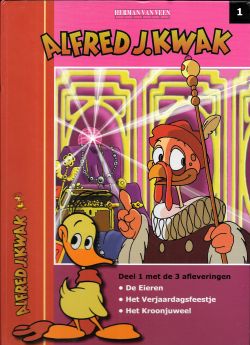 | |
| Written by | Herman van Veen |
| Artwork by | Harald Siepermann Hans Bacher |
| Typesetting and layout | Ton de Jong jr. |
| Publisher | PrimaMedia bv (Ton de Jong) |
| Language | Dutch |
| Release date | 2006 |
| Number of books in series | 17 planned, 2 released |
| Binding method | Hardcover |
The Filmstripboek series was made in 2006 along with the Dutch Disky DVDs. The intention was to use screengrabs from all 52 of the episodes and make them into 17 comicbooks (3 episodes each). Only 2 of these were eventually released. These books use screengrabs from a Standard Definition quality source, likely the Disky DVD release from the same year.
Production
On 24 February 2006, Harald Siepermann posted on his Alfred J. Kwak blog and, three days later, on his personal blog that there would be 52 comic books coming. This statement turned out to be an exaggeration and likely a result of miscommunication, as the images he posted clearly show two alternate covers of the first book featuring King Radbout de Derde and Jonkheer Das, along with content from the first three episodes. These photos likely depict proofs of concept as they were being shown to Siepermann and Stephan Dunweg at PrimaMedia, and include different color tests.[1][2]
The comicbooks closely follow the episode, ommitting, shortening or combining scenes and dialogue to fit into 15-17 pages of generally 6 panels per page. The artwork is almost exclusively Standard Definition screengrabs from the episodes, likely using the Dutch Disky DVDs, which were developed in the same year, as a source. The screengrabs were upscaled using nearest-neighbor interpolation image scaling instead of bicubic scaling. Another result of using screengrabs from the standard definition versions is that some frames include frame blending artifacts, caused by the transitioning from 24 to 29.976 to 25 frames. The second book improves on the quality of the screengrabs used, but it is still possible to see individual pixels and there are still a number of instances of frame blending. There is also a difference in color quality. The first book seems to have been printed in the RGB color model, rather than being converted to CMYK, the standard model for print media. This can be observed in the bright magenta beams of the ruby in the crown, which lose saturation in the center. This effect suggests a color shift resulting from an RGB-to-CMYK conversion error, as the magenta extends outside the CMYK color space. The second book's colors however are muted, which is also evident in Hannes' feather colors as compared to those of the picture of Alfred.
The covers are created by tracing a screengrab from one of the three episodes and coloring them in. In the case of the first book, not only has Jonkheer Poen van Kalekoen been traced, but the background has as well, turning the magenta beams from the ruby of the crown white. The background is shifted left slightly, combared to Jonkheer Poen. On the second book it appears that the background has been upscaled using bicubic scaling and Dolf and Hannes have been traced and put on top of it. The covers would have a number in a black box on the top right, the logo text of Alfred J. Kwak featured twice, once horizontal with the Herman van Veen Studios logo on top, and once sideways with the Alfred J. Kwak logo to the top of it. On the right a red banner and the main picture featuring content from inside the book framed with a specific color on the top and bottom; pink for book 1, green for book 2 and blue for the unreleased book 3. A standard picture of Alfred Jodocus Kwak is featured next to a list of the episode names included in the book. The backs all include short blurbs of each of the episodes it contained with three screengrabs framed inside a filmstrip on a baby blue background.
The inside has a title page and a foreword from Herman van Veen, co-signed tongue-in-cheek by Alfred Jodocus Kwak. At the end of the book is a teaser for the next installment of this series and then a list of all the intended book releases.
On 18 August 2006, at the outdoor theater Cabrio in Soest, Herman van Veen officially announced, at the conclusion of the charity theater play Eend Goed Al Goed for UNICEF, that comics covering all 52 episodes would be released across 17 books (each containing 3 episodes, except the final volume, which contains 4). At the end of the performance, Ton de Jong from PrimaMedia presented van Veen with the very first volume of the series. The plan was for these comics to be translated and distributed worldwide.[3][4]
In November the first book was released in stores and the second book followed at the end of 2006. No official statement has been made as to why no more parts were published.
A behind the scenes video for children was released on the offical Alfred Jodocus Kwak website showing the printing process at Drukkerij Proost. The video was produced by CTV Productions in 2006, filmed by Aaron Rookus, voiced by Erna Berendsen and edited by Pi-Qui Baltink. Music featured was the Dutch end credits and Metliedje.[5]
-
Ton de Jong (??) showing Stephan Dunweg printed pages and a mock-up of the cover of book 1.
-
A close-up showing pages from the first chapter of book 1.
-
Cover with printing bleed of book 1.
-
Cover with printing bleed of book 2.
-
A screengrab from the behind the scenes video from the Alfred Jodocus Kwak website shows that the inside covers were originally supposed to have a color similar to what was on the front, instead of white.
Main staff list
© 2006 Herman van Veen Studios BV, Soest
© 1989 Harlekijn/Van Veen Siepermann, Bacher & JFA productions BV
Exclusive license given by Herman van Veen Studios BV, Soest, Stephan Dunweg
Illustrations: Hans Bacher, Harald Siepermann[note 1]
Text: Herman van Veen
Typesetting and layout: Ton de Jong jr.
Distribution: Joosten & De Haas
Printing company: Drukkerij Proost[5]
Special thanks': Hans Huijsing, Maan Jansen, Manon Kotvis and Letja Verstijnen
Releases
All the releases in this series.
-
Alfred J. Kwak Filmstripboek Deel 1 (2006) (Dutch)
-
Alfred J. Kwak Filmstripboek Deel 2 (2006) (Dutch)
-
Alfred J. Kwak Filmstripboek Deel 3 (Unreleased) (Dutch)[note 2]
Every comic was to be divided into 3 episodes as follows. All the story titles are exactly the same as the episode titles, except for episode 16.
| Deel 1 1 De Eieren |
Deel 10 28 Een Geschenk van de Koning |
Notes
- ↑ Likely Siepermann and Bacher are credited for character designs and background designs for the animated series, but it is unlikely they were involved in the creation of this book.
- ↑ This picture originated from the second comic book in this series, but was never released.
- ↑ This episode name is inconsistent with the episode names from the series. It should be "RangPang". "De straat van Jeep" is also not referring to the geographical location that Colonel Rang Pang is stationed at, because that is called "De Engte van Gebral". It is unknown why this was changed.
References
- ↑ "Verwacht--Demnächst--Coming soon-- on Siepermann's Alfred blog". alfredjkwak.blogspot.com. 24 February 2006.
- ↑ "Surprised on Siepermann's blog". haraldsiepermann.blogspot.com. 27 February 2006.
- ↑ "Films Kwak in stripboek". AD Utrecht's Dagblad (in Nederlands). Utrecht, the Netherlands. 19 August 2006. Retrieved 13 November 2024.
- ↑ "Alfred Jodocus Kwak ambassadeur van Unicef en stripboekheld (originally on UNIEUWS.NL, but documented on veenpers.nl". UNIEUWS.NL (in Nederlands). Wijk bij Duurstede, the Netherlands. 19 August 2006.
- ↑ 5.0 5.1 "Alfred Jodocus Kwak official website". www.alfredjodocuskwak.nl (in Nederlands). Archived from the original on 2007-10-19.
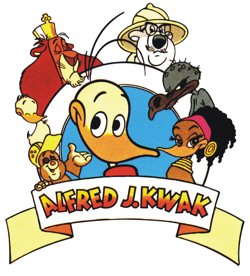
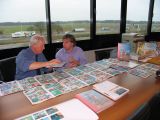
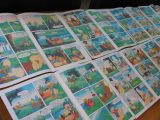
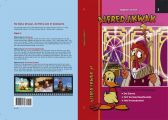
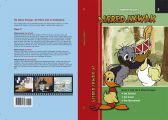
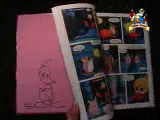
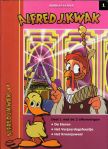
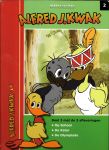
![Alfred J. Kwak Filmstripboek Deel 3 (Unreleased) (Dutch)[note 2]](/images/thumb/a/aa/Filmstripboek3_cover.jpg/105px-Filmstripboek3_cover.jpg)